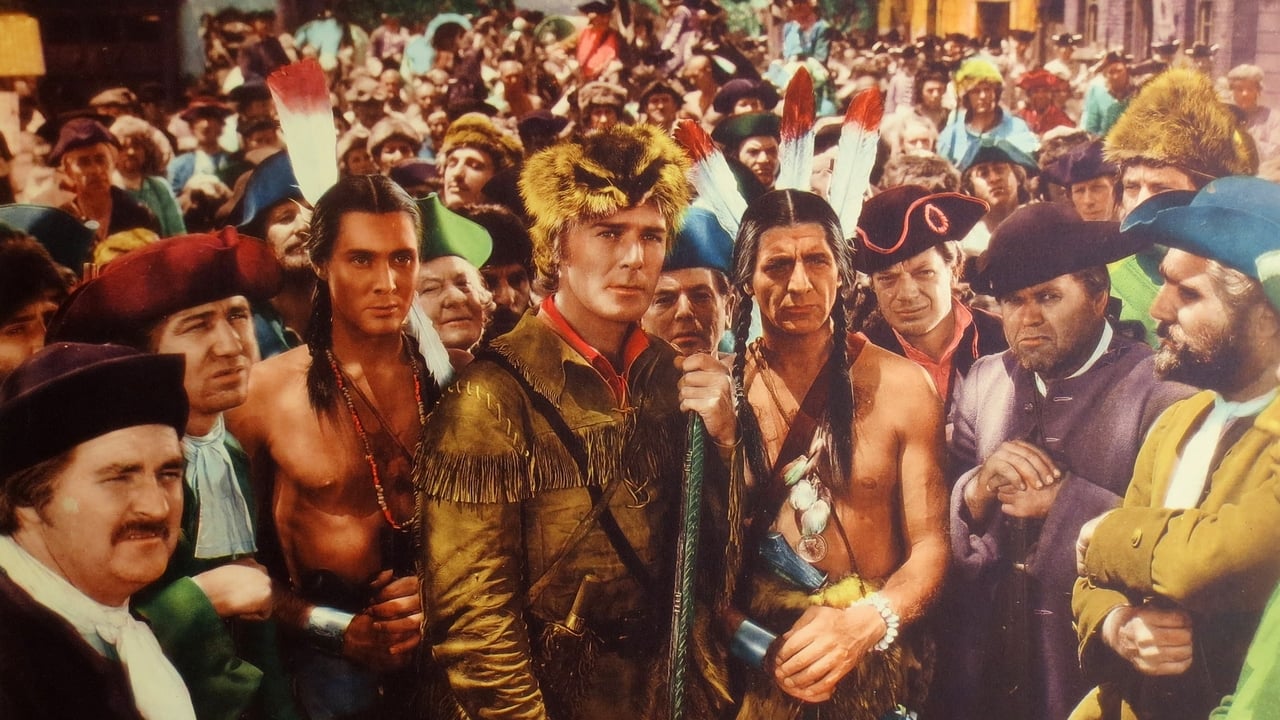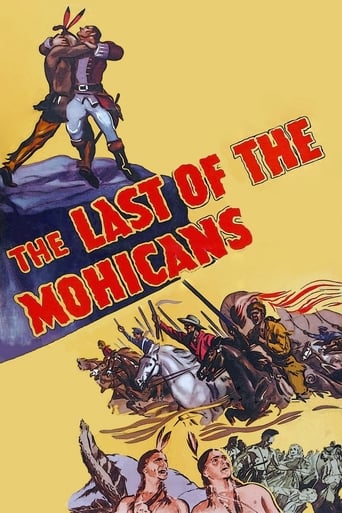

In this version of James Fennimore Cooper's "The Last of the Mohicans" the central character, Hawkeye, is played by Randolph Scott. He's a scout for the English, who are at war with the French and their Indian allies, notably the Hurons.Hawkeye works with his two friends, Chingachgook and Uncas, who are the last living Mohicans. They would prefer to avoid the conflict and take care of their own business, but they are dragged into the intrigue by threats to the settlers in the area and, perhaps, by their interest in a couple of young women. The Huron, Magua, is an excellent villain, thanks to actor Bruce Cabot. And the ladies, Binnie Barnes and Heather Angel, are believable as the women who are the objects of much of the action. Randolph Scott plays Hawkeye as an affable fellow and exudes a certain charm.The title might be misleading for anyone not familiar with Cooper's thrilling tale, but it adds a sorrowful air. It also intimates the historic decimation of native Americans.Further adding to the enjoyability is the fact that most of the background story is historically accurate. The story is a classic.Personally, I prefer the 1992 version with Daniel Day-Lewis, primarily due to its greater feeling of urgency, mostly due to Mr. Day-Lewis. But this earlier version is excellent and, no doubt, served to inflame the emotions of many young viewers in its day.
... View MoreThere have been many films/TV shows made from the Cooper novel, but only 2 really stand out as movies I never tire of watching. This 1936 version, starring Randolph Scott, is one of them. While lacking the majestic beauty of panoramic cinematography that the 1992 version has, it tells the story straight out, with great acting from Randy Scott & his supporting cast. Scott, always the stalwart hero, was never better than as Hawkeye. The director cut no corners, giving the actors whatever they required to make their characters living, breathing, people rather than just cardboard stereotypes as many Hollywood productions did in those early days of sound film. The B/W photography, rather than detracting, actually gives the film a certain historical aspect, as if we are watching a real event through the binoculars of time. I whole-heartedly encourage anyone who hasn't suffered terminal "brain-rot" from the modern crop of "hack-em & slash-em", drugs, sex & rock music, movies, to add this one to their collection of really excellent films!
... View MoreAlthough I have never read the book, I have seen several movies about "The Last of the Mohicans" including those that starred Harry Carey, Michael O'Shea (Buster Crabbe as Magua), Steve Forest, Daniel Day-Lewis, and Randolph Scott as Hawkeye (Nathaniel). Also the TV program starring ex-Lone Ranger, John Hart. For me the number one is Randolph Scott. I'm not saying that the others aren't good, but he is my idea of a clean cut, all American hero whom I'd like to have as a friend especially in time of danger. Actor for actor, the 1936 version has the best cast. Nobody is better than Bruce Cabot as Magua and Robert Barrat is the greatest Chingachgook of all, even though neither one is a real Indian. The final fight to the death between the two of them is far superior than that of any other version and Barrat's homage to his dead son Uncas (Phillip Reed) brings me to tears. There is room for all of these versions, and if you can, watch all of them and pick your own favorite.
... View MoreEven if it weren't based on a book, this movie would have been horrible, and its worse because it is nothing like the classic book it was based on. I would recommend you read the book, but if all possible, pass by this sad excuse for a movie.1/10
... View More